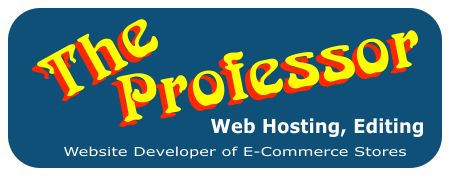Fifteen Point On-Page SEO Improvement List
Boost your website's performance and rankings with this 15-point SEO improvement list.
By implementing these essential SEO practices, you'll enhance visibility, user experience, and overall search engine performance. Follow this list to make sure your website is optimized for success, including shopify and wix.* SEO service providers cannot guarantee results SEO services offer implementation of SEO practices only, which may take weeks or months before any results begin to show. So to ensure to you work you asked for has indeed been carried out we perform seo page check before and after the task(s) using
https://seobility.net/en/seocheck


URL Optimization
- Short and Descriptive URL: Ensure the URL is concise, descriptive, and includes the primary keyword.
- Use Hyphens: Use hyphens (-) to separate words in the URL (avoid underscores).
Title Tag
- Primary Keyword: Include the primary keyword near the beginning of the title.
- Length: Keep the title between 50-60 characters.
- Unique and Compelling: Make it unique and compelling to encourage clicks.
Meta Description
- Primary Keyword: Include the primary keyword in the meta description.
- Length: Keep it between 150-160 characters.
- Compelling: Write a compelling description that encourages clicks.
Header Tags (H1, H2, H3, etc.)
- H1 Tag: Include the primary keyword in the H1 tag.
- H2, H3 Tags: Use H2 and H3 tags to structure the content and include secondary keywords.
Content Optimization
- Quality Content: Ensure the content is high-quality, relevant, and provides value to readers.
- Primary Keyword: Use the primary keyword naturally in the first 100 words.
- Keyword Density: Maintain a natural keyword density (avoid keyword stuffing).
- LSI Keywords: Include Latent Semantic Indexing (LSI) keywords throughout the content.
- Content Length: Aim for at least 800-1000 words (longer content often ranks better).
- Readability: Ensure the content is easy to read with short paragraphs, bullet points, and subheadings.
Image Optimization
- Alt Text: Include descriptive alt text with primary keywords for all images.
- File Name: Use descriptive file names with keywords for all images.
- File Size: Optimize image file sizes for faster loading times. [convert/compress using *.webp image format]
Internal Linking
- Relevant Links: Add internal links to other relevant pages on your website. /website-url-links-explained
- Anchor Text: Use descriptive anchor text with keywords.
External Linking
- High-Quality Sources: Link to high-quality, authoritative external sources.
- Relevant Content: Ensure external links are relevant to your content.
Mobile Optimization
- Responsive Design: Ensure your website is mobile-friendly and responsive.
- Mobile Loading Speed: Optimize for fast loading times on mobile devices.
Page Speed
- Loading Time: Ensure the page loads quickly (under 3 seconds is ideal).
- Optimize Code: Minimize CSS, JavaScript, and HTML.
- Use Caching: Enable browser caching and use a Content Delivery Network (CDN).
User Engagement
- Engaging Content: Include multimedia (images, videos, infographics) to make content engaging.
- Call to Action: Add clear and compelling calls to action (CTAs).
Schema Markup
-
Structured Data: Use structured data (schema markup) to help
search engines understand your content. [Business][Organization][FAQ][Product][Video][Blog
Article]
[Breadcrumb][Searchbox]
Social Sharing
- Social Buttons: Add social sharing buttons to make it easy for users to share your content. addtoany.com/share
Security
- HTTPS: Ensure your website is secure with HTTPS. Add security headers to the htaccess file.
Analytics and Tracking
- Google Analytics: Set up and configure Google Analytics. /analytics.google.com/
- Google Search Console: Set up and verify Google Search Console. /search.google.com/search-console

This comprehensive on-page SEO checklist will help you optimize your web pages for better search engine rankings and user experience. Make sure to tick off each item as you complete it to ensure you're covering all the essential aspects of on-page SEO.













